Is Graphic Design a Good Career Choice? Insights from Course Graduates
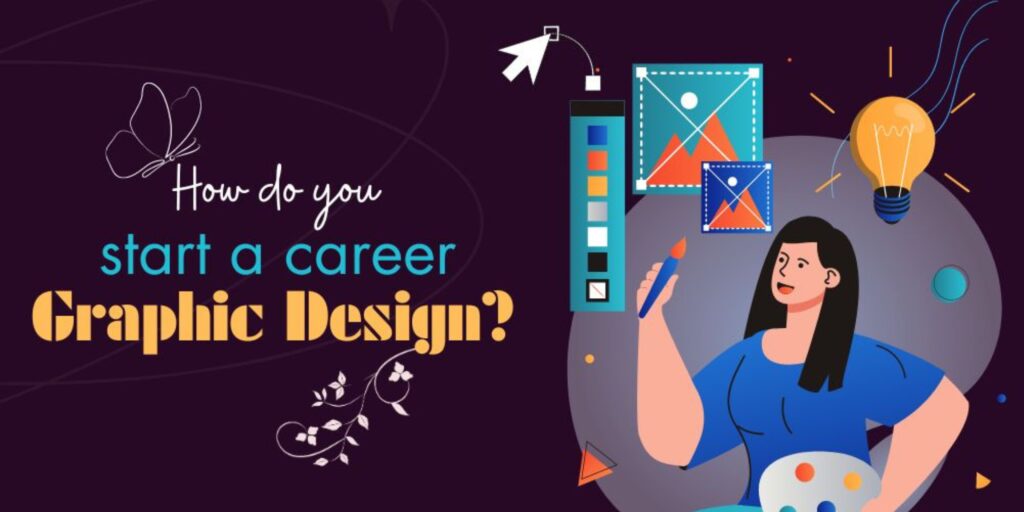
Graphic design is one of the most creative and dynamic fields of the modern business era. Whether branding and advertising, web design and digital marketing, graphic designers have a lot to do with shaping how companies tell their message to the world. As more and more businesses start to go online, the need for qualified graphic designers has risen exponentially.
The digital revolution evolved the communication method between brands and their consumers, making it more dependent on visual communications. Presently, companies seek designers who can develop great visuals to capture audiences, drive engagement, and improve user experience. Graphic designers have numerous career opportunities: Corporate brands, creative agencies, or freelancing-in technology, marketing, publishing, e-commerce, or entertainment.
Graphic designers inspire many aspiring creatives regarding whether this profession is a viable career choice. To answer this question, we’ll explore the job market demand, how formal education prepares students for success, real-life success stories, tips for landing a job, challenges in the industry, and the key traits needed to thrive in this profession. By the end of this article, you will be making the right decision on whether graphic design is a career for you and what makes it a successful career in an exciting field.
1. The Growing Demand for Graphic Designers
1) The Role of Graphic Design in Today’s Digital Economy
Graphic Design in the Contemporary Digital Economy: Importance
Graphic design is more than a pretty picture; it is how businesses communicate around the world. In the new digital economy, clear content is required to attract audiences, communicate messages quickly, and effectively so that websites, social media graphics, advertisements, and mobile apps would really depend heavily on good design in order to shape consumer behavior and brand perception.
With the growth of the internet, companies need to embrace the best visual content that can make them stay ahead in the competition. A good website, dynamic social media, and marketing material all go together to make a good brand. Graphic designer is the nucleus who changes the scene; with his artistic skills, he brings a uniqueness to brands and reaches out to maximum numbers in the best possible way. Designing is an art that enhances user experience and fetches good conversions eventually.
A higher percentage of digital marketing requires more of a graphic designer. For instance, there is multimedia, video content, and interactive websites that need visual aspects to appeal to their target audiences. Investment in branding would pay for consistency, evoked emotions, and brand recognition. There is huge demand for graphic designers with bias in UI/UX design, motion graphics, and animation to help businesses find new ways to improve their online presence. Implication of design can be found beyond marketing in product development, corporate communications, and customer interaction.
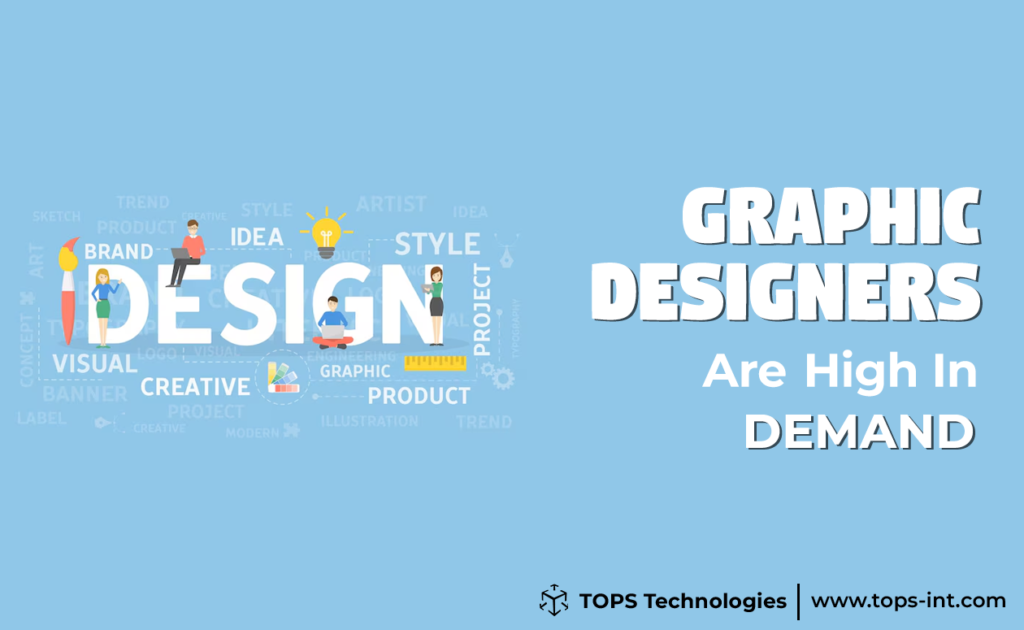
2) Industries That Rely on Graphic Designers
Graphic design is perhaps one of the flexible skill sets applied in various industries, taking place across several competent industries, that are heavily reliant on graphic designers, such as:
Marketing and Advertising: For businesses, that involves good visualizations to be used in social media, digital advertisements, brochures, and billboard presentations. Well-designed campaigns attract people’s attention and drive customer engagement.
Technology and UI/UX Design: Technology firms employ designers to design websites, mobile applications and software that have friendlier user interface. UX design process ensures a product works satisfactorily as well as beautifully and is accessible.
Publishing: Newspapers, magazines, and book publishers hire designers to develop layouts, cover designs, and infographics for publications. Good design makes it easier to read and more aesthetically pleasing.
E-commerce: Online stores require graphic designers to create product images, banners, and branding materials. A strong visual presence can raise conversions and elevate the shopping experience.
Entertainment and Media Graphic designers in film, television, gaming, and digital media design promotional material, movie posters and animation. The entertainment value of visual elements is crucial in drawing the audience’s eye and enhancing the storytelling.
Companies may require designers of logos, packing, business presentation, and intra-organisational communication items. A more cohesive brand gives the company credence and will increase customer belief in the branding.
There’s a lot here, so not only will every graphic designer have a niche within which they’d be able to work, whether it’s all about branding or digital design and multimedia production-but they can easily specialize in aspects that suit them creatively and serve their career better.
3) Job Market Trends and Future Career Prospects
Demand for graphic designers will rise with growing businesses’ focus on digital marketing and branding. According to industry reports, job opportunities are growing in UI/UX design, motion graphics, and digital marketing. Companies seek experts in responsive web design, mobile app interfaces, and interactive media.
Another widely followed means of career direction would be freelancing. Here designing is done around the world, but with much say in client projects. Most businesses hire freelance designers for their project-base work. Many appreciate flexible schedules for work arrangements and remote. Online platforms through Behance and Dribble and Fiverr have been a stepping stone for people to showcase more of their output and attract as many clients around the world who would be considering them for hired services.
The future of graphic design also depends on developing technologies like artificial intelligence, augmented reality, and virtual reality. AI-enabled tools speed up creativity, while new scopes in an interactive experience arise with AR and VR. Demand will continue only for those updated about industry trends and continuously upgrading their skills.
Sustainability and ethics in design are becoming more important. Companies are opting for eco-friendly packaging, digital-first marketing and accessible design practices. The result is that designers who understand the principles of sustainable design and inclusive practices will be at a competitive advantage.
Overall, prospects for those considering a career in graphic design appear bright. Change in the field of graphic design brings new exciting opportunities that professionals who engage in lifelong learning and adaptability will continue to enjoy.
2. How a Graphic Design Course Prepares You for Success
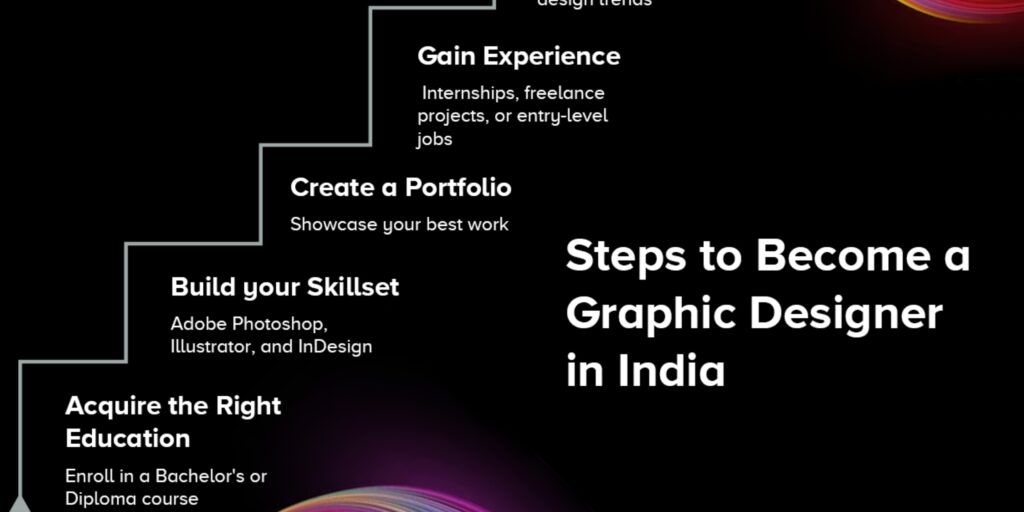
1) Key Design Principles and Technical Skills Covered in Courses
A graphic design course teaches students the underlying basics of design, which are essential in making beautiful and functional designs. These include balance, contrast, alignment, repetition, proximity, and hierarchy-all essential aspects of content organization and readability. Color theory is also an important factor, since it can teach a designer to use good judgment about color schemes that evoke the proper emotions and help to achieve brand compliance. Typography is also very important in design, teaching students how to make the right choice and pair fonts to better communicate effectively and aesthetically.
Besides principles, these courses are all about specific technical skills-one would learn in layout design, image editing, vector illustration, and branding. How to manipulate images how to create illustrations, how to compose meaningful engagements and best practices used in marketing, designing for the web and advertising-all such insights are provided through these courses.
By mastering these principles and skills, students can be able to produce designs that have the right messaging and are beautiful. A mastery of these foundations is not only a source of creativity but will also prepare students for professional life, whether working in a corporation, an agency, or on their own. This foundation establishes a basis for success in an ever-changing discipline like graphic design.
2) Hands-On Training with Industry-Standard Tools
Hands-on training is also an essential element of any course in graphic design, as students need to effectively use industry-standard tools. In this regard, the most frequently used design software are Adobe Photoshop, Illustrator, and Figma, and its mastery gives the designers a cutting edge.
It is used to edit, manipulate, and compose images. The students learn about enhancing photos, removing backgrounds, applying filters, and even doing digital artwork here. It especially helps in branding, advertising, and digital marketing.
Adobe Illustrator is a graphics editor that provides the facility for creating vector graphics. It’s the best software for creating logos, icons, typography, and illustrations. Courses teach students to use the pen tool, scalable graphics, and professional branding materials.
Figma is now the leading tool for UI/UX design, giving designers the possibility of creating interactive prototypes of websites and applications. Students learn to design user-friendly interfaces, work in real time with teams, and optimize their designs for both web and mobile applications.
Through these tools, the students make actual hands-on projects, which is a practical experience into the real-world. Mastery of the software programs outlined is also the key to landing design jobs or freelancing. Because the industry is constantly evolving, they have to keep up with it.
3) Importance of Having a Professional Portfolio
The most important tool of a graphic designer is their professional portfolio because it serves as the proof for his skills, creativity, and experience. Thus, courses for graphic design major in portfolio development and give the student real-life projects to depict his skills.
A good portfolio presents a variety of projects, ranging from logo design to website layout, branding, social media, and digital illustration. This showcases the designer as versatile and also capable of coping with various forms of design challenge. It displays problem-solving capability by showing what a designer uses to approach any project from beginning to end.
A good portfolio is more than a collection of designs-it tells a story. A designer should tell his or her work in such a way that the thought process, creativity, and technical prowess can be well communicated. It can be achieved through case studies, before-and-after comparisons, and explanations of design choices.
Online portfolio is equivalent to having in the digital age, and, as such, there are channels such as Behance, Dribbble, or a website to present themselves globally to all possible clients and employers.
When it comes to developing a course for graphic designers, it not only focuses on a portfolio. Thus, such students will definitely graduate with visual resumes that build more career success opportunities and ensure an edge at competitive job searches.
3. Success Stories: How Graduates Transformed Their Careers
1) Interviews with students who found success in graphic design
Many students who finish a course in graphic design end up achieving incredible success in the industry. Interviews with graduates reveal how the right kind of training, hands-on experience, and portfolio development helped them find employment or build freelance careers. Some found work in advertisement agencies tech companies and studios doing design jobs, while others have started their own ventures.
For example, Riya, who was a marketing executive, took a design course in order to hone her branding skills. After she finished the course, she got full-time employment as a graphic designer at a top agency. . Also, Aman was the one passionating about illustration works who practiced his skillset within the course and now freelances for international clients.
The stories hint how formal education along with hard work can open so many doors. Perfect skills mentoring and consistent perseverance ensure that many creative passions of graduates translate into rewarding professions.
2) Career shifts: From different fields to becoming a designer
Creativity is boundless. Many professionals transition from graphic design with totally different backgrounds. Graphic design courses offer a well-structured pathway for career changers to learn new skills, build their portfolios and gain confidence entering the industry.
For example, Meera is an ex-school teacher who always wanted to create engaging lesson material for her students. She came across a course on graphic design and started using tools like Photoshop and Illustrator; today, she works full time as a designer in an ed-tech company. Vikram, who was working as an engineer, realized he loved designing UI/UX more than coding. After doing a course in design, he is working as a UI designer at a tech startup.
These transitions show how experience in other fields complements design skills – marketing professionals turn into branding experts, architects to visual designers, and IT professionals shift to UI/UX design. Proper training, sense of determination could lead any one of us towards prosperous graphic design career.
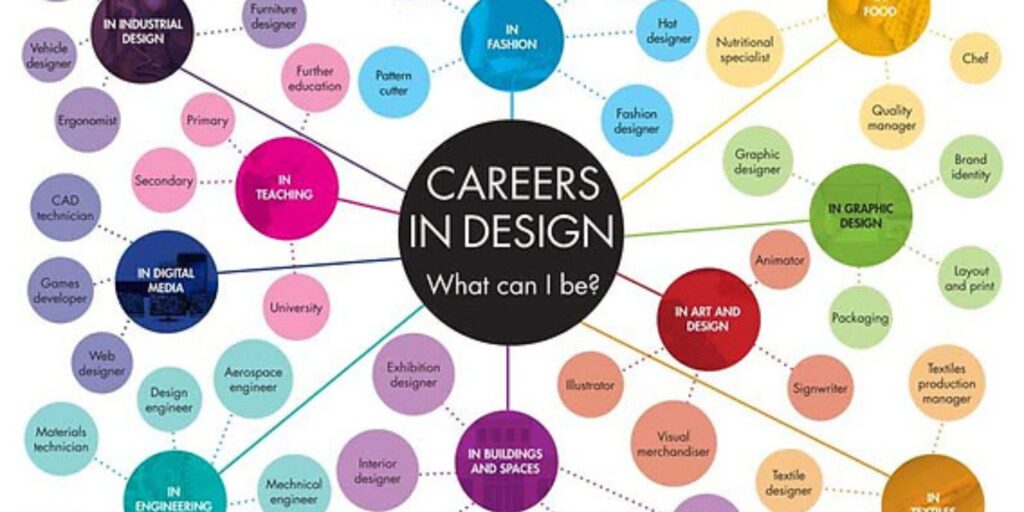
3) Freelancing vs. full-time employment: What worked for them?
A graphic design graduate’s biggest dilemma is whether to freelance or seek a full-time employment. Some thrive with the security of a corporate job; others live for the freedom of freelancing.
For instance, Priya became job-ready after the course and landed a job at a digital marketing firm right away. She likes being in a structured environment where she gets a steady income and works with a creative team. Rahul wanted to work on different kinds of projects and have control over his schedule by opting for freelancing. He built up a very strong portfolio and is currently working with international clients on Upwork and Behance.
Where as full-time jobs provide people to have security much better, freelancing provides them with independence and unlimited earning capacity. Many students start with a job to get experience and later switch to freelancing, and others prefer hybrid, where one works a job while freelancing on the side. Success basically depends on personal goals, working preferences, and networking capabilities.
4. From Classroom to Career: Landing Your First Job
One of the biggest concerns for graphic design graduates is transitioning from coursework to a professional career. The good news is that with the right strategies, many have successfully secured internships, freelance opportunities, and full-time positions. However, this process requires persistence, networking, and continuous skill development.
1) How Graduates Gained Internship Placements and Employment
Applying for an internship or a permanent position after graphic design course entail a combination of skills, strategy and persistence. In most cases, many graduates begin by seeking internships where they are exposed to practical experience and a portfolio build-up. Companies are always looking for highly creative individuals, skilled in design software, as well as a capacity to fulfill the requirement of project objectives.
Some of the students get placements because of the agreements between colleges and design agencies or tech firms. Others apply for the positions via LinkedIn, Behance, or Indeed. While studying, several of the graduates also take freelance projects, so they can add that as a real experience on their applications to the companies they are applying for.
It has its success stories when there are interns who, based on the performance, became full-time employees.
It means that having an internship or a job opens to an individual with a very strong portfolio, proactive application, and enhancing design skills to make them competitive in the market.
2) Networking and Personal Branding
Networking is an integral part of launching a successful graphic design career. Many job opportunities arise from professional connections so graduates need to be involved with industry professionals attend design events and join online communities. Through platforms like LinkedIn, Dribbble and Behance designers can show off their work and connect with potential clients or employers. If you are looking for another blog chack out this blog Best graphic Design Carrer.
Building a strong personal brand is as important. . An online presence thought out well a portfolio website and social media profiles go a long way in establishing credibility. Regular posting of work participation in discussions on design-related topic or even writing in industry blogs or forums can create job opportunities.
Many graduates who are great networkers end up finding work through connections or collaborations rather than by applying. Making contacts with mentors former instructors or other designers can lead to internships, job offers and freelance gigs. A good personal brand makes sure that employers view a designer as talented, professional, and ready for opportunity.

3) How to Write an Exceptional Resume and Portfolio
A good design resume or portfolio can bring about a difference in the hiring chances of a graduate. The graphic design resume must, therefore, be visually appealing but clear and professional. It should, first of all, show the importance of key skills, proficiency in software such as Adobe Photoshop, Illustrator, and Figma, and relevant projects. A minimalist layout with a touch of creativity will make the resume stand out without being too complicated.
The portfolio is the most important, as it functions as a reflection of the best work and creativity of a designer. It must have as many projects with various themes, like branding, web design, illustration, and marketing materials. All the projects must be accompanied by a short description of the concept, process, and final result.
A digital portfolio on Behance, Dribbble, or a personal website increases visibility to potential employers. Case studies and real-world projects also enhance credibility. A polished resume and portfolio, combined with networking, really make a graduate stand out for their first design job.
5. Overcoming Challenges in the Graphic Design Industry
Like any profession, graphic design comes with its share of challenges. Here’s how successful designers tackle them:
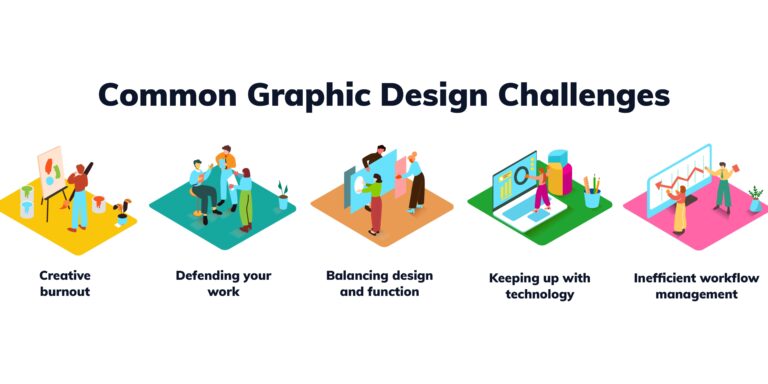
1. Challenges new designers encounter (finding clients, getting noticed, and charging appropriately for work)
One challenge of entering the industry of graphic designing is that it is very demanding, especially for new designers; finding clients is not an easy task and, in fact, gets harder without any network of established contacts. Many beginners depend on freelancing platforms, social media, or referrals to get their first projects. Another challenge is standing out in a very competitive market where thousands of designers offer similar services. To differentiate themselves, designers must develop a unique style, build a strong portfolio, and maintain an active online presence.Pricing work correctly is another significant challenge, as most new designers undercharge because of not being confident enough or having less experience. Understanding industry standard rates and the value of one’s skills is very important to sustaining a profitable career. Key takeaways to overcome these challenges are persistence, continuous learning, and strategic networking so as to develop credibility and attract steady work.
2) How past students navigated competition and career obstacles
Successful graphic designers often share similar stories of overcoming industry obstacles. Many students start by taking internships or freelance projects to gain practical experience and build a strong portfolio. Networking is also very important in being noticed; going to design events, being active on Behance and LinkedIn, and collaborating with other creatives are some of the ways that professional connections are built. Others specialize in niches such as UI/UX, branding, or motion graphics, making them more sought after. Others experienced career failure but learned new software or added new services to their offerings. Many credit their mentors online courses and design challenges for honing their skills and bringing them attention. The ability to remain proactive and seek growth opportunities is the key by which former students have been able to survive the competitive world of graphic design.
3) Role of continuous learning
The nature of the design industry is always in a state of flux. As such, for one to achieve long-term success, they have to keep on learning. As frequently, new tools, software, and design trends pop up so designers need to stay updated so they can survive the competition. The Adobe Creative Cloud is launching new features monthly. Figma and Webflow are becoming more standard in terms of UI/UX design. Those who follow courses, join workshops, and experiment with fresh styles are above the curve. Expanding into related fields such as digital marketing, branding psychology, or coding can improve career opportunities. Great designers take time for personal projects and online challenges in addition to mentorship programs to hone their craft. Continuous learning is not only technical skill building but also fuels creativity and adaptability; the result of being relevant in an industry that continues to rapidly change
6. Is Graphic Design the Right Career for You?
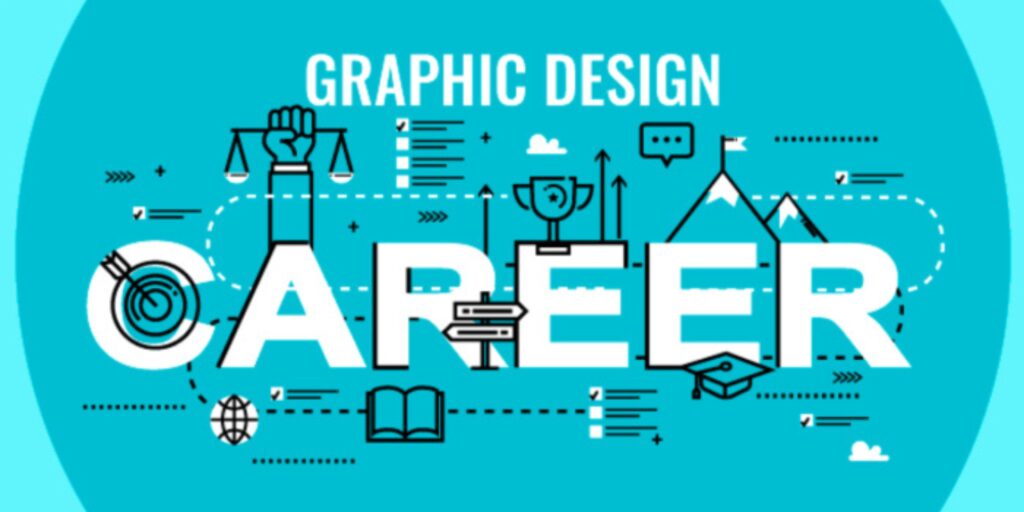
1. Traits of successful graphic designers
Above all, the field of graphic design requires a lot more than technical skills; it calls for creativity and flexibility with keen vision. Effective designers can think within the visual language of the story and hold the capacity to translate abstract notions into graphic presentations. The capacity for solving problems is another trait, because many designers often require creative answers for branding and marketing as well as user experience-related issues. Patience and resilience are also necessary because, sooner or later, there will be client feedback and revisions. Good communication skills will help designers explain their ideas and work effectively with clients or teams. Time management and self-discipline are also necessary, especially for freelancers working on multiple projects. People who love learning and never lose curiosity toward design trends would be the best ones to succeed for a longer time in their career, who love visual communication.
2. Potential for growth and long-term benefits of career:
Graphic designing provides great growth opportunities and careers. One may start as junior graphic designer, reach senior designation, creative directors, or brand strategist. With experience, people find themselves moving into these specialty areas: UX/UI design, animation, web design-only to mention a few-in an ever-increasing demand industry.Another good thing is the level of flexibility in freelancing or remote work from various agencies, technical companies, and media houses. Also, the ability to create a personal brand and gain clients on your own makes financial growth higher. With the emphasis that companies are placing on efficient visual identities, there is always a need for talented designers. After a few years, designers can even open their studios, work for famous brands, or teach and mentor younger designers.
3. Last words of advice from higher seasoned graduates
Experienced designers usually advise their junior counterparts that one should persevere and learn continuously. In other words, they say one should concentrate on creating a robust portfolio rather than waiting for a dream job opportunity. Experiencing various design styles, joining online challenges, and learning from industry leaders helps speed up the growth process. Networking is another aspect: it connects one to professionals, leads one to design communities, and helps engage with others on platforms like Dribbble or LinkedIn. Many graduates also emphasize embracing constructive criticism to improve their work. Time management and self-discipline, particularly for freelancers, help in maintaining a smooth workflow. Finally, passion keeps a career in graphic design long-lasting and prosperous. Only people who actually enjoy making and problem solving are satisfied in the field in the long term.
"Curious if graphic design is the right career for you? Hear from our course grads and take the first step today!"
Conclusion
Graphic design is a field full of opportunities for creative individuals who are willing to put in the effort. It combines artistic expression with technical expertise, allowing designers to build brands, communicate ideas, and create meaningful visuals that impact audiences worldwide.
The transition from classroom learning to a professional career can be challenging, but with persistence, networking, and continuous learning, success is attainable. The industry demands adaptability, and those who embrace change and stay updated with trends will have a competitive edge.
Ultimately, if you have a passion for creativity, problem-solving, and visual storytelling, graphic design can be an incredibly fulfilling and rewarding career. Stay curious, keep experimenting, and never stop learning—the future of design is in your hands!



